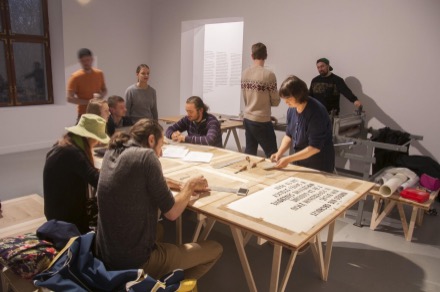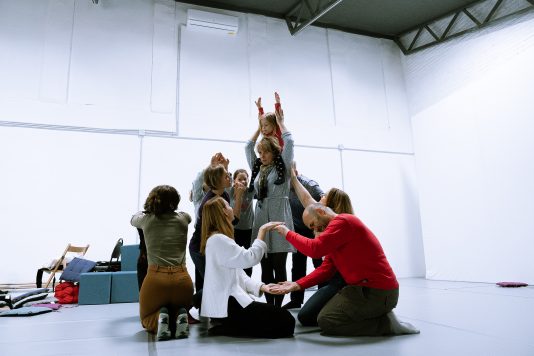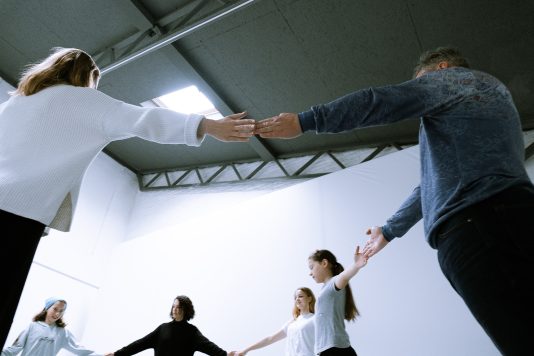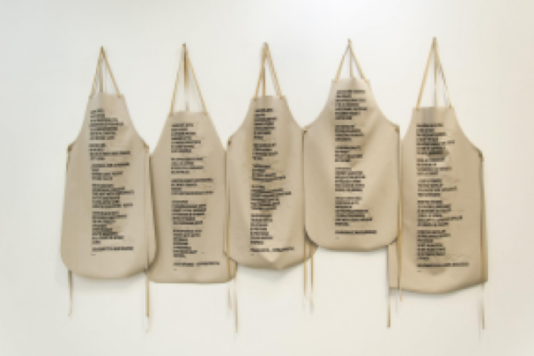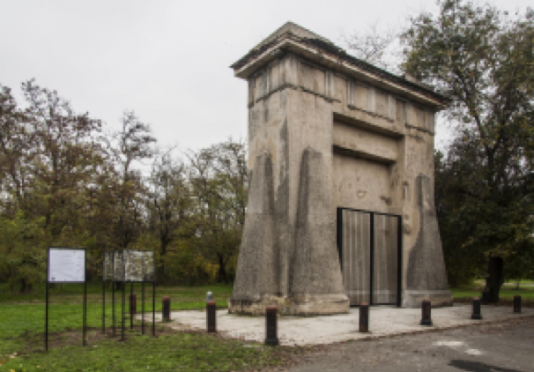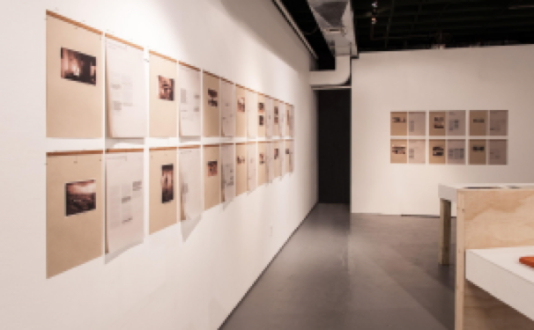The Platform for Interdisciplinary Practice “Open Place”
Currently lives and works in: Kyiv, Ukraine
Yuriy Kruchak is working somewhere between art and social studies. His artistic strategies are determined by specific problems and usually result in the engagement of different communities into the creative process. The works of Yuriy Kruchak in the public space transform the audience into the actors, creating a community whose behaviour and interaction serve to interpret and reveal social structures in an urban environment. His work addresses the relationship of art to the reality, but also the relationship of the artist to the audience. He is not only an artist, but also works as curator and organiser.
Areas of interest: Participatory art
Why are you a part of MagiC Carpets: This is an opportunity for me to work and cooperate with colleagues from other regions and countries, receive a better understanding of other contexts, gain new experience for us in a group and create a common field of understanding and reveal the important issues. MagiC Carpets also provides an opportunity to establish long-term professional relationships with colleagues for further cooperation.
MagiC Carpets project
Past projects
Nomadic Archive – Fresh Market
Type: 88 works on paper, 176 photographs digital C-print on paper, and transfer lettering
The archive contains intimate stories of different people. We’re curating the way that information is coming to us by framing the experience through a series of questions. Currently, the archive has stories on emigration, violations of labour and human rights, patriarchal control over women, xenophobia, self-identification and identity, and other precarious conditions. An archive is a kind of mélange – a mixing of various narratives and social compounds, spectrum toward freedom and restrictions in the different sites.
In the archive we bring together different contexts and experiences by documenting and creating them. And, of course, the core is not in the number of stories we want to get or to reach the certain number, but in their totality, in how these stories give meaning to each other, how they relate to each other, how they engage in a conversation with each other. How one story answers the questions raised in other stories, and how together they create a certain narrative.
Another series of questions related to the form of the archive and its subjectivity. How should a space look, where these narratives come out? Who is the final editor and the storyteller? As the creators of the archive, we want Fresh Market to be more than a positing of a traumatic experience of the person whoever’s going to share a story, so that it can be an environment for collaborative work. We want to trace how the story is read and perceived. For this we use certain methodologies. Fresh Market is a nomadic archive that is filled in and worked on in the different contexts. To emphasize the multiplicity of interpretations, we use transparent layers that are imposed on top of the initial text, each time when it is read in a new context. We invite people to read the story and highlight what seems important to them. Selected fragments are placed on a separate layer that overlap the previous layer, the name of the person who read, and the date of reading is placed next to the reading results.
By Memory
Type: Interventions
Artelerisky Park
Odesa, Ukraine
October, 2019
At the intersection of Lustdorf Road and Arteleriyska Street, in Odesa, there is a “green spot”, mapped as Artelerisky Park. Very little is known about this place. For the passers-by, the park is just a shorter way, and they speed up while walking through it. A large building made of stone with no signs on it is hanging over the silent path. It’s hard to guess form the first glance, what is this place and what is its purpose, as if it exists outside of time. The place was repurposed three times throughout its 140-year history. At first it served as The Second Jewish Cemetery, then it became a memorial of execution of international French soldiers in 1919, today it’s an abandoned green area, where homeless live, and people walk their dogs between big gray rocks that look like gravestones hiding behind the trees.
The history of this place is an emblematic case of collective forgetting, when the traumatic events are concealed or an uncomfortable topic for the public discussion, therefore, they cannot be comprehended. The memory of the place is being washed away from the map of the city, as the function of the space is being eroded. The symbolic meaning for the community related to this space is being lost and replaced by marginalized practices. It makes the place unprotected, leaving it waiting for new changes anxiously, for the ones that may erase its past irreversibly, and people will continue walking over the memory mindlessly.
By Memory is a creative and research practice of reconstruction of different layers of memory. It aims to bring back the lost location to the city and to comprehend the traumatic history behind this place.
More information about the project is on the website www.po-pamiati.odesa.ua/ and in the Museum of History of Odessa Jews “Migdal Shorashim.”
Manifesto Poem – Solidarity is our weapon!
Type: Linocut
Ujazdowski Castle Centre for Contemporary Art
Warsaw, Poland
November, 2017
For five days of the workshop “Migrations of bodies and words”, we shared stories, experiences, poems and reflections on the situation of people of foreign origin living in Poland. Poetry and linocut were constituted our means of communication, collective action and designing a social change. To what extent may non-citizens count on protection on the grounds of employee rights and human rights in Poland? By which tools does patriarchal capitalism wield control over women of foreign origin and to what forms of labour does this capitalism sentence those women? In which acts of physical and psychological abuse does Polish xenophobia manifest itself? What is the reason behind the immigrants’ problems with self-identification and difficulties in entering close relations with the Poles? In what way does capitalism create the precarious condition of a human being while interfering with their material and social status, as well as their physical and affective domain? And finally, how to find a field of social solidarity with the people excluded due to their origin?
Each of the meetings left a mark in the form of a poetic phrase which was handed over to the participants of the next meeting in order to be cut. As a result, a poem was created as a record of common experiences and meetings. At the same time, the linocut became a manifesto of the collective action.
The workshop “Migrations of bodies and words” was initiated by artists Yuriy Kruchak and Yulia Kostereva and realized in collaboration with poets Maja Staśko, Michał Kasprzak and Aneta Kamińska, as well as with the visitors of the exhibition “Gotong Royong. Things we do together”.
The result of the cooperation, Manifesto Poem, can be read here in Ukrainian, Polish, Romanian, English, Chinese
What inspires you as an artist? People, the traces they are leaving and their consequences.
What do you think is the purpose of art? Art provides an opportunity to understand the world around us and the processes that are happening in and out of us.
Contacts
Email: [email protected] | Website
